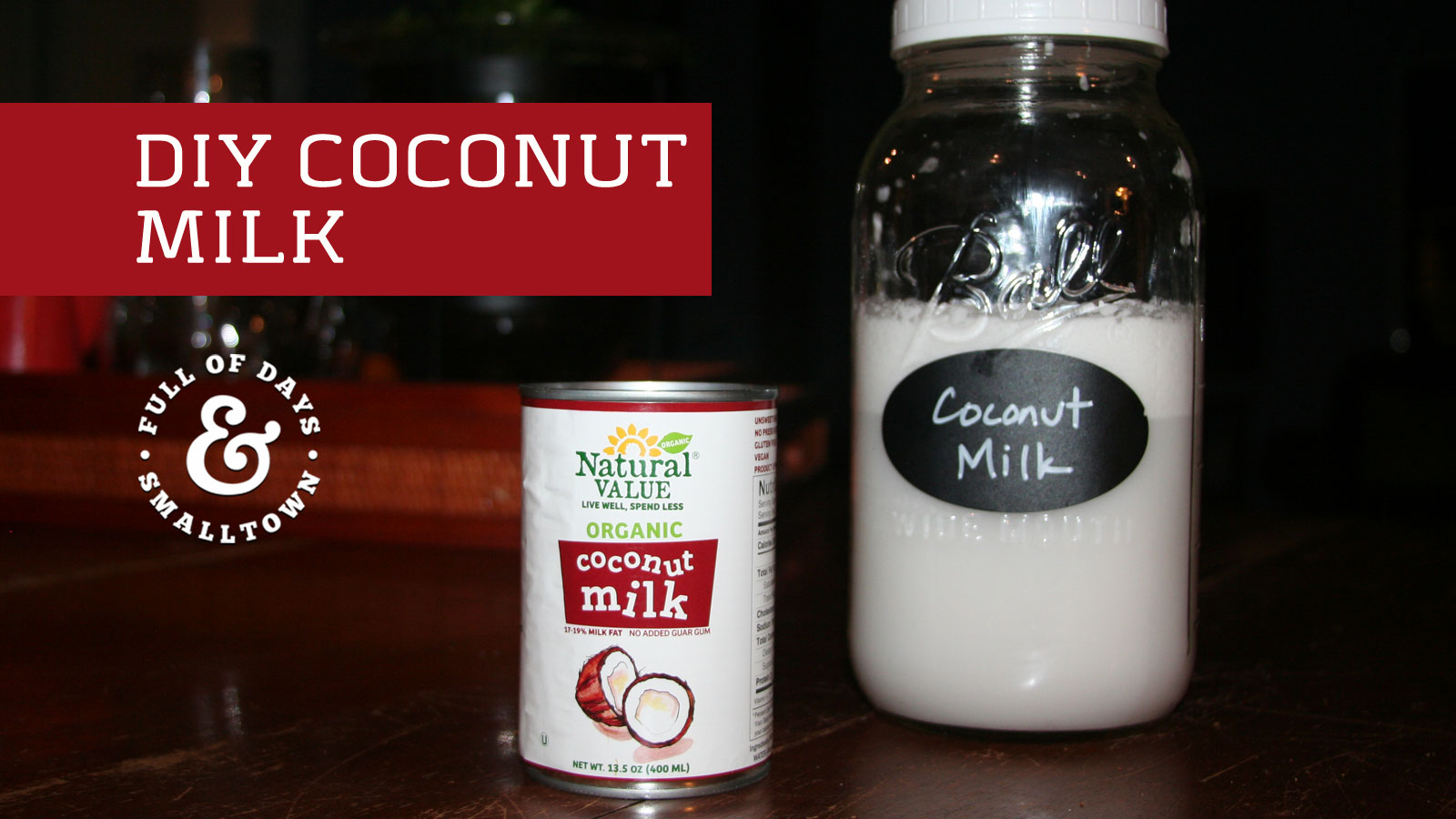
e adore coconut milk. We love it in soups, savory dishes, rich and creamy desserts and smoothies. Ya’ll know my love of coconut oil for the various health benefits of the medium-chain fatty-acids, and those same benefits can be found in coconut milk!
But wait! Those cartons of coconut milk from the grocery store are no good. In fact, they may do more harm than good. Coconut milk should never have more than two ingredients: coconut and water. Homemade coconut milk is a cinch to make! And I’m going to share three ways to Do.It.Yourself!
Coconut Milk #1: Add one can of full-fat organic coconut milk and 4 cups filtered water to a blender. Blend on high for 15-20 seconds and store in the refrigerator. For extra frothy coconut milk, blend for 30-60 seconds…YUM!
Coconut Milk #2: Add 1 cup softened organic coconut manna* and 3 cups filtered water to a blender. Blend on high for 30 seconds, strain through a nut-milk bag** and store in the refrigerator.
Coconut Milk #3: Add 2 cups organic shredded coconut and 4 cups filtered water to a blender. Blend on high for 30 seconds, turn off blender for 1 minute, then blend on high for 30 seconds more (this step may take longer depending on the power of your blender). Strain through a nut-milk bag** and store in the refrigerator.
*To soften coconut manna, place entire jar in a bowl of hot water for a few minutes.
**After straining through nut-milk bag, dehydrate the coconut pulp in a 200 degree oven (or dehydrator) until completely dry. You have just made DIY Coconut Flour!
What’s so bad about those cartons?
Let’s take a quick look at a few of the ingredients on some of the most popular brands of coconut milk…
Carrageenan: This is a big no-no! Carrageenan is a known carcinogen (cancer causing) and is also known to cause digestion problems. It’s used as a thickener and an emulsifier in many dairy and non-dairy products to keep ingredients from separating (check your labels, I bet you’ll be surprised to find how many food products it’s lurking in!).
Vitamin D2: Sounds good, right? Wrong! This vitamin D isn’t natural, it’s created in a lab, completely synthetic and unusable by our bodies to do the job of “real vitamin D“. Companies will use words like “fortified with vitamin D”, but don’t let that fool you! You’re better off getting vitamin D from foods where it’s naturally present, not added.
Guar Gum (and other “gums”): These ingredients can cause serious digestive upset in those with sensitive stomachs (or the millions suffering from Leaky Gut Syndrome). Although consuming these “gums” occasionally isn’t cause for alarm, I’d try to steer clear of them in products that are consumed with any frequency. Additionally, xanthan gum is typically derived from corn, and most of the corn in the US is genetically modified. So if you’re trying to avoid GMO products, it’s best not to consume those containing xanthan gum.
Added sweeteners: Evaporated cane syrup and cane sugar don’t sound too bad, but if they’re not organic you may be consuming unwanted chemicals from pesticides. I happen to like the natural sweetness of coconut milk, however if I’m making a coconut milk latte, then adding some maple syrup (or vanilla stevia) is really delicious. Better to have control over what and how much sweetener is being added to your coconut milk by making it at home!


